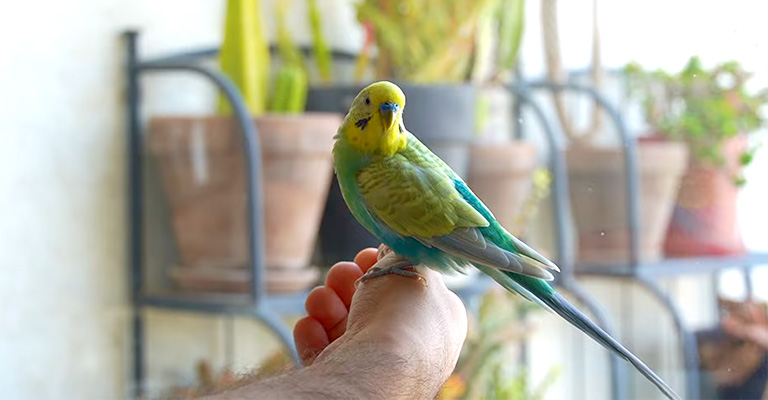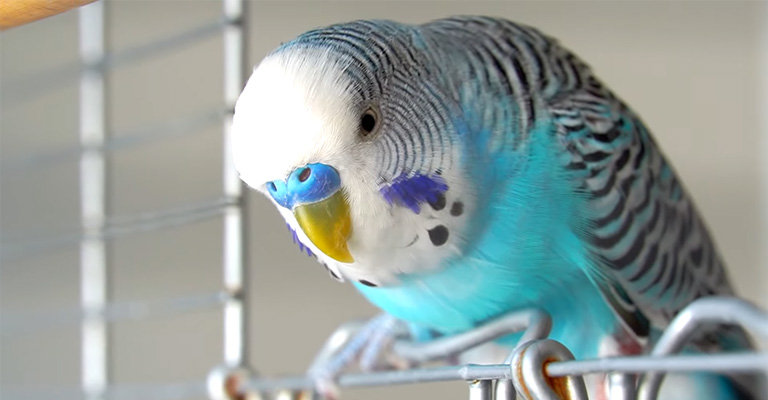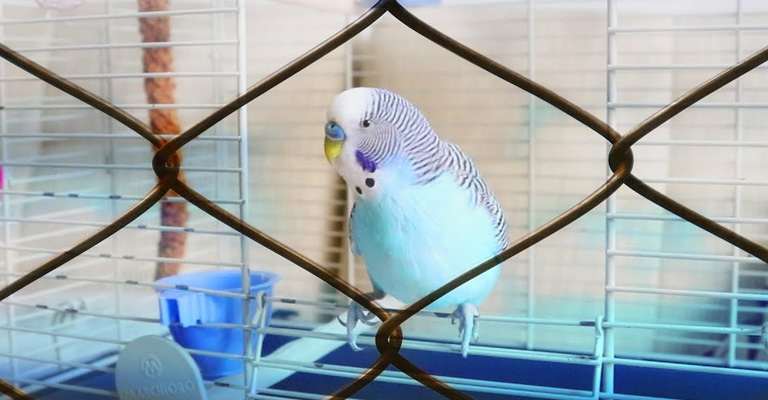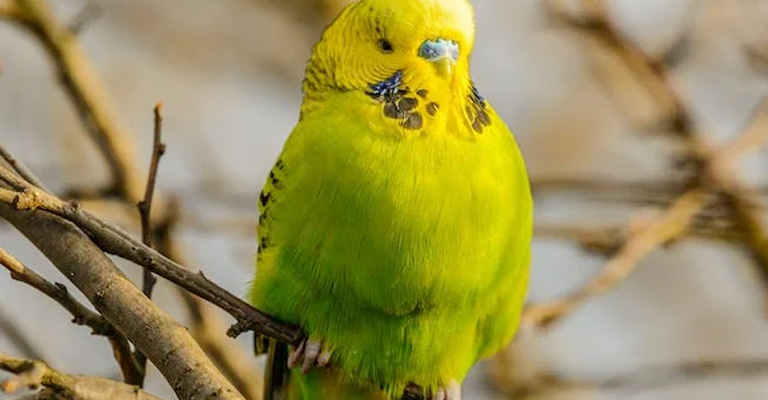Watching your budgie take flight and soar around the room can be a breathtaking sight, but there may come a time when you need to catch your feathered friend for various reasons, such as returning them to their cage or ensuring their safety.
So, how do you catch a budgie that is flying? In this guide, we’ll explore step-by-step techniques for safely catching a budgie that is in flight, ensuring both your budgie’s well-being and your peace of mind.
Whether it’s a momentary escape or a regular occurrence during playtime, these strategies will help you swiftly and gently bring your budgie back under your care.
Join us on this journey to master the art of in-flight rescue, and you’ll be well-prepared to handle such situations with confidence and grace, ultimately strengthening the bond between you and your beloved budgie.

How Do You Catch a Budgie That Is Flying?
Catching a budgie that is flying can be a delicate task that requires patience and precision. Here’s a step-by-step guide to help you safely catch a flying budgie:
Stay Calm
The most important thing is to remain calm. Sudden movements or panic can startle your budgie and make it more challenging to catch. Before attempting to catch your budgie, make sure all doors and windows in the room are closed to prevent escape.
Create a Safe Landing Spot
Place a soft landing area on the floor, such as a thick towel or a pile of soft cushions. This will provide a safe place for your budgie to land.
Approach Slowly
Approach your budgie slowly and quietly. Avoid making loud noises or sudden movements that could scare it further.
Use a Towel or a Blanket
One effective method is to use a small towel or a lightweight blanket. Gently drape it over your budgie, being careful not to injure its wings or body.
Lift Gently
Once the towel or blanket is draped over your budgie, gently lift it off the ground, taking care to support its body. Hold it securely but gently to prevent injury.
Return to Cage or Play Area
After safely catching your budgie, return it to its cage or play area, and allow it to calm down. Offer treats and reassuring words to help reduce stress.
Avoid Chasing
Avoid chasing your budgie around the room, as this can cause additional stress and make it harder to catch. Instead, be patient and use the towel or blanket method.
Remember that catching a flying budgie may take some practice, and it’s crucial to prioritize your budgie’s safety and well-being throughout the process.
If your budgie frequently escapes during playtime, consider taking preventive measures like clipping its wings (done by a professional avian veterinarian) or providing a secure play area to minimize the chances of escape.
Why Do Budgies Escape from Their Cage?

Budgies may escape from their cages for several reasons. Here are the common reasons why your pet bird might escape its cage:
Curiosity
Budgies are naturally curious birds and may attempt to explore their surroundings, including areas outside their cages.
Social Interaction
Budgies are social creatures and may want to be near their human caregivers or other budgies in the household. They might escape in an attempt to join you.
Inadequate Cage
If a budgie’s cage is too small or lacks proper enrichment, they may feel the need to seek stimulation and exercise outside the cage. Sometimes, budgies escape due to human error, such as not securely closing cage doors or latches.
Escape Attempts
Budgies are excellent fliers, and if they spot an open window or door, they may attempt to fly through it, believing it leads to freedom.
Boredom
Budgies can become bored if not provided with enough mental and physical stimulation in their cage. Escaping offers them a change of scenery and activity.
To prevent escapes, it’s essential to provide your budgie with an appropriately sized cage filled with toys, perches, and mental stimulation. Additionally, ensure that all cage doors and latches are secure when your budgie is inside.
Supervised playtime outside the cage in a bird-safe area can also help satisfy their curiosity and need for exercise while minimizing escape risks.
How to Prevent My Budgie from Escaping?

Preventing your budgie from escaping requires careful attention to their cage and environment. Here are some steps to help keep your budgie safe inside its cage:
Secure Cage Doors
Always double-check that cage doors and latches are securely closed before leaving your budgie unattended. Budgies are clever and can figure out how to open some latches if they are not adequately secured.
Choose an Appropriate Cage
Ensure your budgie’s cage is the right size. It should be spacious enough to provide room for exercise and wing-flapping without feeling cramped. A larger cage also reduces the risk of accidental escapes.
Cage Location
Place the cage in a secure location away from doors, windows, or areas with frequent drafts. Avoid placing the cage near household items or furniture that your budgie might use to climb and potentially escape.
Flight-Proof the Room
If you allow your budgie outside the cage for supervised playtime, ensure the room is bird-proofed. Close all windows and doors, and cover mirrors and reflective surfaces, which budgies may perceive as open spaces.
Clip Wings Safely
Consult an avian veterinarian to have your budgie’s wings clipped if necessary. This should be done by a professional to avoid injury. Clipping can prevent high-flying escapes but should be done with caution to allow for safe gliding.
Provide Mental Stimulation
A well-enriched cage with toys, perches, and activities can keep your budgie mentally engaged and reduce the desire to escape from boredom.
Supervised Playtime
When allowing your budgie out of the cage for playtime, always supervise closely. Use a bird-safe play area or use a play gym designed for birds.
Build Trust
Building a strong bond of trust with your budgie can make them more likely to stay close to you during playtime and less likely to try to escape.
Regular Health Checks
Ensure your budgie is in good health by scheduling regular check-ups with an avian veterinarian. Health issues can sometimes lead to behavioral changes that increase escape attempts.
By taking these precautions and providing a secure and stimulating environment, you can help prevent your budgie from escaping and keep it safe and happy inside its cage.
What to Do If My Budgie Flies Away?

If your budgie flies away, it can be a distressing situation. However, there are steps you can take to increase the chances of finding and safely recovering your budgie:
Stay Calm
Try to remain as calm as possible. Panicking can make it harder to think clearly and take effective actions.
Note the Escape Route
Observe the direction your budgie flew and take note of any landmarks or distinctive features in the area. This information can be crucial when searching.
Search the Immediate Area
Begin your search in the vicinity of where your budgie was last seen. Look both indoors and outdoors, as budgies can sometimes fly into neighboring rooms or even outside.
Inform Neighbors
Let your neighbors know about the escape and ask them to keep an eye out for your budgie. Provide a description and a contact number.
Use Familiar Sounds
If your budgie responds to specific sounds, such as a favorite song or call, play those sounds softly in the area. Your budgie might recognize them and come closer.
Leave the Cage Out
Leave your budgie’s cage, with the door open, in a safe and visible location indoors. Sometimes, escaped budgies return to their cage.
Place Food and Water
Leave some fresh food and water near the cage or in the area where your budgie was last seen. This can attract your budgie if it’s hungry or thirsty.
Contact Local Animal Shelters and Bird Clubs
Reach out to local animal shelters, bird clubs, and online forums to spread the word about your lost budgie.
Social Media and Lost Pet Websites
Post information about your lost budgie on social media platforms and websites dedicated to lost pets. Include clear photos and contact information.
Offer a Reward
Consider offering a reward for information or the safe return of your budgie. This can motivate people to assist in the search.
Stay Patient
Finding a lost budgie may take time. Continue your search efforts over several days, as budgies can survive outdoors for a while.
Consult an Avian Veterinarian
Seek advice from an avian veterinarian who may have further tips and guidance based on your budgie’s behavior and habits.
Remember that budgies are generally not equipped to survive in the wild, so they are more likely to stay close to where they escaped. The sooner you begin your search and involve others, the higher the chances of safely recovering your budgie.
FAQs
Budgies are not strong long-distance flyers. Typically, they stay within a few blocks of their escape point. However, they can fly up to several miles if conditions are right.
Approach your budgie slowly, avoiding sudden movements. Offer familiar sounds or call its name softly to encourage it to come to you. Use a towel or blanket to gently catch it if it’s within reach.
A lost budgie may survive for a few days to a week or more, depending on access to food, water, and shelter. However, they are vulnerable to predators and environmental dangers.
Budgies often recognize their owners and may fly toward them if they are in the vicinity. Using familiar sounds or your voice can help them identify you.
Budgies are diurnal birds, meaning they are active during the day. Searching for your budgie during daylight hours is generally more effective, as they are more likely to be active and visible during the day.
Conclusion
Mastering the art of catching a flying budgie is a skill that requires patience, calmness, and a deep understanding of your feathered companion.
It’s a task that may become necessary at some point during your budgie’s time outside the cage, and doing it safely and gently is of utmost importance.
Throughout this guide, we’ve explored techniques that prioritize your budgie’s well-being and minimize stress during in-flight rescue missions.
By maintaining a calm demeanor, using gentle approaches, and creating a safe environment, you can ensure that your budgie returns to its cage or designated play area without harm.
Over time, you and your budgie will develop a rapport that makes these moments of catch-and-release less stressful for both of you. Through patience and care, you’ll continue to build a strong and loving bond with your cherished budgie.